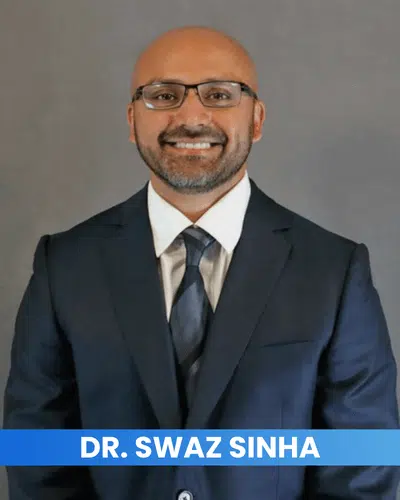The smart Trick of Axis Spine And Orthopedics That Nobody is Discussing
The smart Trick of Axis Spine And Orthopedics That Nobody is Discussing
Blog Article
Indicators on Axis Spine And Orthopedics You Need To Know
Table of ContentsAxis Spine And Orthopedics for Dummies6 Simple Techniques For Axis Spine And OrthopedicsFascination About Axis Spine And OrthopedicsUnknown Facts About Axis Spine And Orthopedics
An orthopedic specialist is a doctor that specializes in treating issues of the bones, joints, and connective tissues, and guaranteeing you keep a healthy bone and joint system., we have actually extremely qualified orthopedic doctors that are capable of dealing with individuals of all ages. I got entailed in research study throughout my very first year of medical institution, and I began making links with orthopedic doctors early on.
Go over the post-operative care plan with your doctor. Prepare for transportation to and from the hospital on the day of surgical treatment.
The Single Strategy To Use For Axis Spine And Orthopedics

Your medical professional will provide lots of info regarding post-operative care, consisting of just how to stay tidy and maintain the medical area tidy. Following these suggestions can prepare you literally and emotionally for your orthopedic surgical procedure. Keep in mind to keep a favorable outlook and count on your medical team's experience, adding to a smoother recovery process.

Or else, you'll simply get confused. Think of the big picture. Nobody anticipates you to understand anything, so don't try to memorize a lot of arbitrary realities. Whether you're following your children, dealing with treking trails, or displaying your finest dance moves, keeping your bone and joint system in fantastic shape is essential. Or else, joint discomfort can actually ruin your life.
The continuous ache in your knee or the stiffness in your shoulder can slow you down and make even simple jobs challenging. Usual problems treated by orthopedic surgeons are: Cracks and Bone Trauma: Broken bones and other injuries from crashes or effects. Joint inflammation: Particularly osteoarthritis, which creates joint pain and tightness. Benign Soft Cells Lumps: Non-cancerous growths in muscular tissues or other soft cells. Bone Cancer: Tumors in the bones. Bursitis: Swelling of the tiny sacs of.
Axis Spine And Orthopedics Fundamentals Explained
fluid that cushion the bones, ligaments, and muscle mass near your joints. Neck and Lower Back Discomfort: Concerns impacting the back. Orthopedic Trauma: Serious injuries impacting bones, joints, or soft cells. Sports Injuries: Problems like ligament tears, tendon injuries, and joint pain from athletic activities.
Strains and Pressures: Injuries to ligaments and muscle mass. Tendinitis: Swelling of the ligaments. Orthopedic surgeons carry out a range of procedures to assist people with musculoskeletal concerns. Common instances are knee and hip substitutes. Joint Repair: Restoring a damaged joint to restore its function. Bone Grafting: Taking bone from one part of the body and transplanting it to an additional location to repair and reconstruct damaged bones. Reconnecting Nerves: Repairing damaged nerves to bring back movement and feeling. Spine Disk Replacement: Replacing a damaged spinal disk with a synthetic one to relieve pain and restore feature. You'll need to take and pass the Medical University Admission Examination( MCAT). This standardized examination assesses your knowledge and abilities needed for success in medical institution. Medical institution is an intense

The Only Guide to Axis Spine And Orthopedics
Next, they finish an orthopedic residency. It's normally 5 years and offers hands-on learning in a clinical setting. Restricted activity because of pain. Rigidity. Visits frequently consist of: Reviewing your symptoms, clinical background and way of life. A physical examination, including relocating the impacted joint in details means. Continued Imaging studies, such as an X-ray. Explanation of your diagnosis.
Treatment referrals. Some conditions require added imaging, like a CT scan or MRI for more in-depth views of the unpleasant location. Your orthopedist will certainly advise therapies to lower signs until you receive a diagnosis. Orthopedic surgeons focus on nonsurgical and medical techniques. For specific sorts of orthopedic injury or genetic conditions, surgery is commonly the first line of treatment. For most various other conditions, orthopedists try nonsurgical therapiesinitially. It might take greater than one kind of treatment to achieve long lasting relief. Selecting the right is important for effective medical outcomes and enhanced client recuperation. With a wide variety of choices offered on the market, it can be frustrating for both doctors and people to make an educated choice. The leading five factors to take right into account when selecting an orthopedic implant are medical compatibility, cost-effectiveness, factors to consider for revision surgery, patient-specific factors, and the design and advancement of the dental implant. They are available in different shapes, dimensions, and materials, each offering a details objective based on the individual's needs. Comprehending the fundamentals of orthopedic implants is important before diving right into the decision-making procedure. One of the leading factors to consider when selecting an orthopedic implant is its compatibility with the surgery. Different implants are created for various medical methods and methods. The orthopedic implant should be especially made to fit the individual's anatomy and ensure security during the healing procedure. Surgical compatibility involves factors such as dental implant dimension, shape, and product. The success of orthopedic procedures counts greatly on the proper option and placement of implants that work with the individual's anatomy and clinical history. By focusing on individual safety and health, orthopedic doctors can achieve effective results and give the best of treatment to their patients. Surgeons need to meticulously think about the biomechanical homes of the implant and just how it will integrate with the person's bone structure. This will contribute to better surgical end results, decreased issues, and shorter recovery time. When selecting implants for a person, it is essential to take into consideration a range of patient-specific factors that can influence the success and result of the procedure. These factors include the person's age, bone quality and quantity, dental health standing, case history, lifestyle practices, and visual choices. For older clients with jeopardized bone thickness, much shorter implants or implanting procedures may be helpful to give the necessary stability and assistance. 3. Is the dimension of the orthopedic dental implant an essential consideration? Just how does it influence the operation and the individual's recovery? Yes, the dimension of the dental implant is vital as it should match the client's framework for proper fit and performance. 4. Can the client's age and way of life play a function in choosing one of the most suitable orthopedic implant? Absolutely. How does the cost of an orthopedic implant factor right into the decision-making procedure, and exist methods to balance high quality with affordability? The cost of the dental implant is a vital consideration, yet it needs to not be the single determining element. Stabilizing top quality with affordability involves considering various implant alternatives 'lasting advantages and potential problems. Report this page